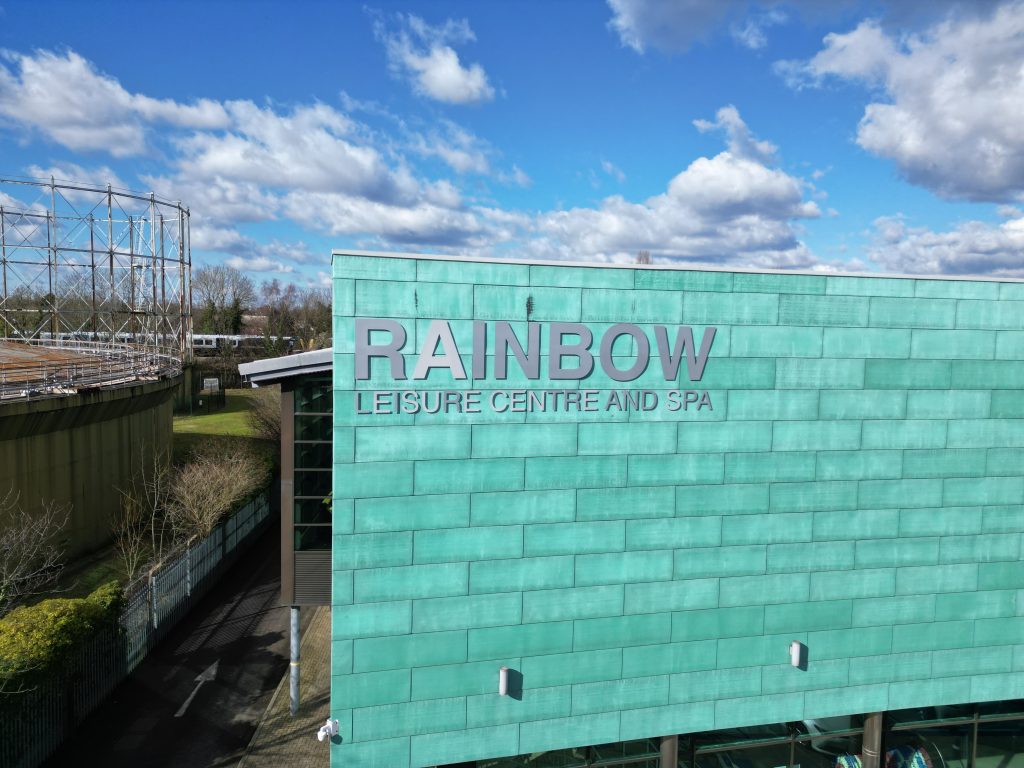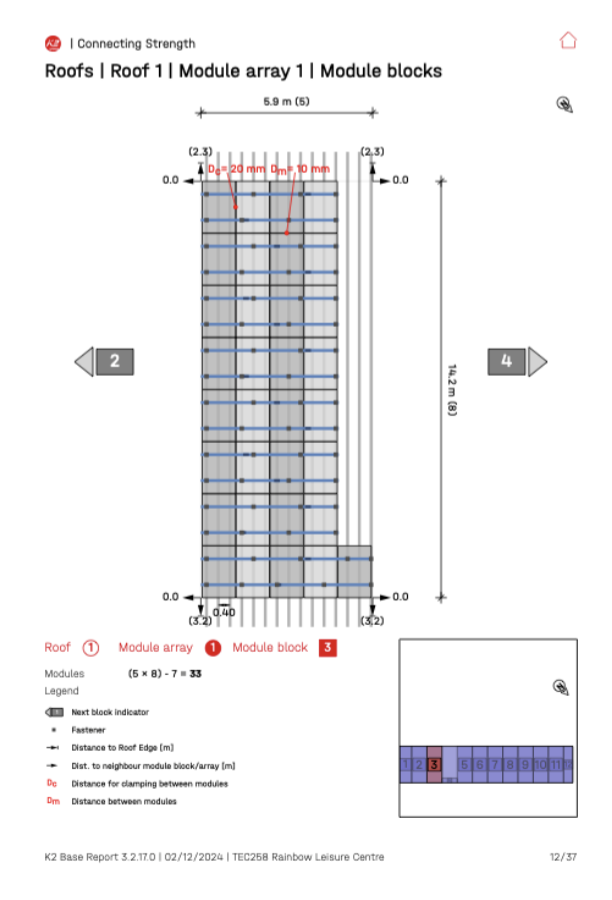PROJECT OVERVIEW
Rainbow Leisure Centre, a key recreational facility in Epsom, recently underwent a solar energy upgrade to align with its sustainability goals. This case study highlights the design, components, and outcomes of the installation, showcasing how solar technology can contribute to energy efficiency and environmental responsibility.
OBJECTIVES
The solar installation at Rainbow Leisure Centre was designed to maximize energy production while maintaining functionality and structural integrity. A tailored approach was essential to meet the specific requirements of the building and its operations.
SYSTEM COMPONENTS
Solar Panels: 395 x DMEGC 450W all black bifacial panels were selected for their high efficiency and reliability.
Inverters: Two Solis 80kW inverters were installed to convert DC electricity generated by the panels into AC electricity for on-site use. These inverters ensure high efficiency and seamless integration.
Mounting System: The panels were installed using a K2 standing seam mounting system, designed to provide durability and a secure anchor to the building’s roof.
Additional Features: Birdproofing mesh was fitted around the array to protect the system from debris and pests.
Height and Access: With the building standing 8 meters high, scissor lifts were utilized to safely transport the panels to the roof during installation.
Monitoring System: A dedicated monitoring display was included to provide both live and historic generation data provided directly from the Solis inverters, enabling real-time performance tracking and analysis.
IMPLEMENTATION
- The installation commenced with a thorough site survey to assess sunlight exposure and structural requirements, taking into consideration the planned construction of a nearby building.
- Standing seam clamps were laid out and installed according to the detailed K2 positioning report generated by the K2 Base software before mounting rails were fitted.
- Once in position, the panels were all mounted using a scissor lift to safely reach the roof due to the building’s height and the 16 DC strings were cabled back to the inverter location.
- Finally, the inverters were installed and connected to integrate the solar energy into the leisure centre’s electrical system.
- A monitoring system was installed within the lobby area to provide real-time and historical energy generation statistics to the general public.
RESULTS
Energy Generation: The 177.75kW system is expected to generate approximately 140,000 kWh annually, significantly reducing the centre’s reliance on grid electricity.
Environmental Impact: The installation will prevent an over an estimated 29 tonnes of CO2 emissions annually, equivalent to planting over 1350 trees.
Cost Savings: The solar system is projected to deliver substantial energy cost savings of over £44,000 per year, making it a financially viable solution for the facility. (The savings quoted will vary depending on the system size, annual generation and ongoing electricity costs)
CONCLUSION
The solar PV installation at the Rainbow Leisure Centre demonstrates the effectiveness of integrating advanced solar technologies into community and recreational spaces. By selecting high-efficiency components and employing a bespoke installation approach, this
project sets a benchmark for sustainable the councils energy initiatives in similar settings.
Please note: The savings quoted in these case studies are indicative and will vary depending on the size of your system, your annual energy generation, and ongoing electricity costs. Actual savings may differ.


 Solar & Battery
Solar & Battery

